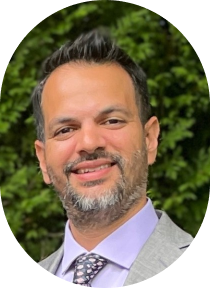
Our Practice Areas
At SHV Partners, our mission is simple yet profound: Sustaining Human Value in every step of your leadership journey. Through shared knowledge and diverse perspectives, we empower your team to drive business success by putting people first. We do this through three distinct practice areas: SHV Partners, SHV Pathways, and SHV Press.
Consulting
Learning
Publishing
Our New Brand
Since 2018, we’ve grown from a solo practice into a team of consultants helping leaders and their teams align, grow, and thrive. Along the way, it became clear: our work isn’t about one person—it’s about shared intelligence and creating lasting, collective impact.
That’s why we’ve change our name from Scott Hackman Ventures to SHV Partners — where SHV stands for Sustaining Human Value. This rebrand reflects our commitment to building meaningful solutions that honor people, purpose, and progress.
What Makes SHV Different
At the heart of our client-centered work is a commitment to delivering personalized solutions tailored to your organization’s unique challenges, opportunities, and goals.
- Believes clients know their organization better than we do
- Listens and learns about your organization’s dynamics and context
- Integrates evidence-based theories & tools with your unique needs
- Co-creates tailored strategies with care
- Honors complexities for lasting results
- Delivers aligned, impactful solutions
Our solutions are grounded in a collaborative, multidisciplinary model. Our team is composed of specialists from a variety of fields, bringing diverse perspectives and expertise to every challenge.
- Create strategies that are rooted in the power of shared intelligence and collaboration
- Ensure no opportunity or solution is overlooked
- Guide you through obstacles while demonstrating the power of teamwork
- Utilize multiple disciplines for client delivery to meet your organizational need
With hundreds of successful client engagements, we have developed the skills to identify common and unique pain points with precision.
- Identify and address root causes for sustainable change
- Use deep listening and learning to co-discover obstacles
- Leverage experience from hundreds of successful engagements
- Pinpoint common and unique pain points with precision
- Design solutions that tackle core issues for lasting impact
Our work is guided by a deep commitment to our values. We strive to understand the whole person—considering both the professional and personal aspects of leadership.
- Meaningful, sustainable solutions come from deep listening and curiosity
- We respect the wisdom in diverse experiences and knowledge
- Collaboration, innovation, and mutual respect shape our strategies
- Our partnerships are built on trust, empathy, and lasting success
Each element works in harmony to create a powerful framework for organizational transformation. Whether you’re facing leadership challenges, managing transitions, or building a stronger culture, our integrated approach ensures comprehensive, lasting results.
Our team has been honored to work with clients nationwide across a variety of industries.
Here are some of their kind words.

Having never worked in a family-owned, private company I wasn’t prepared for how different and challenging leading in that environment could be. The stakeholder management and executive interactions were nothing like I’d experienced before. Scott was exceptional at pulling out the true root cause of what was holding me back, methodically dissecting it and helping me to build an actionable plan to improve. He took the time to educate me on the science behind what was happening to me and how I was reacting to it. The main thing that set Scott apart from others I have worked with – authenticity. I felt from day one that Scott genuinely cared about me as a person and was fully vested in my journey. I felt like he was truly a partner along the way and not just following a scripted process or doing a job. I look forward to working with Scott again and would recommend him to any executive how is looking to continue to grow.

One of the biggest differences I notice as a result of coaching with Scott is transformed relationships with colleagues. He encouraged me to think about the values of others and how they drive our thinking and behavior. I’ve learned more effective ways of engaging with others in the company to understand their points of view. I’ve been able to resolve conflicts through a consensus-based approach that presents a united front to employees.

Alicia is a trusted partner in cultivating a dynamic team. She can assess the needs of individuals and leverage her knowledge, skill, and experience to foster growth toward better management and leadership qualities within the team. Within a short 6 months; we saw incredible growth in our team’s collective engagement and each member’s individual growth. Alicia is well-researched and logical in her approach, yet she has a unique ability to meet people where they are and guide them toward the desired goals. Her care and compassion are emulated in her interactions with all team members.

Ruby provided invaluable guidance as I navigated a complex and high-pressure leadership challenge. Her ability to listen deeply and offer clear, insightful feedback helped me gain clarity and confidence in my path forward. Ruby encouraged open communication and strategic decision-making, equipping me to take a stand that aligned with my values and leadership vision. I deeply appreciate her expertise, candor, and unwavering support during this pivotal time.

Andrea Hackman’s support as I launched my consulting business, L3 Catalyst Group, was invaluable. Andrea is brilliant, astute, brave, energetic, detail-oriented, and most of all, she listened so very well to my hopes and dreams for my business’ contribution to the world. I came into our sessions with a whirlwind of thoughts that she helped me focus, synthesize, and boldly share with the world. Her big heart, wisdom, and holistic, client-centered approach is a precious combination. I highly recommend Andrea.

Over the past six years Scott has stewarded us through several monumental transitions in our rapidly growing family business. His expertise in family succession and management transitions were instrumental in providing the framework for the future governance of our enterprise. As a direct result of Scott’s mastery of individual and group facilitated workshops with our organization and its leadership, we are, without a doubt, better equipped to engage and empower our broader teams to achieve success.

Working with Mindy as a coach happened at a pivotal time. I was having a difficult time trying to stay motivated to rebrand and grow my business while navigating all the change that was taking place around me as a working mom and wife during a time of political and racial upheaval in a pandemic. The sessions I had with Mindy gave me time to hone in on the actions I could take to keep moving forward with my goals. With the guidance of a coach, I was able to cut through the noise in my brain and gain clarity about who I am as a founder and the type of leader I want to be for my team.

This past year is one I will embrace and remember because of my tremendous professional growth. Did it take work, absolutely, but if you believe you have untapped potential and you want to take the leap of faith, the sky is the limit. I found my confidence and voice to the point that I am coaching up and making an impact by being intentional with my leadership style. Alicia let me brainstorm my ideas, provided very insightful experience, and opened up different perspectives to consider. Hands down the investment is worth every penny, and having Alicia as your coach will allow you to take your skills to the next level. I am grateful to have worked with such a talented coach and would highly recommend her to anyone who wants their return on investment.

I had the opportunity to work with Melinda through a leadership development course provided by SHV Partners and hosted by my employer this spring and summer. Melinda is a terrific facilitator and coach. She is able to “read a room,” allowing her to move through the material efficiently and effectively by recognizing when to give a group space to dwell on a topic together, when to ask a probing question, or when to simply move forward. Melinda is extremely personable, a terrific listener, and open-minded. She is easy to converse with and it allowed our group to open up and explore the material. Melinda will help you discover how to improve communication, embrace conflict, and address uncomfortable situations in order to foster healthier relationships, bolster team performance, and build an organizational culture that reflects your values.

Having never worked in a family-owned, private company I wasn’t prepared for how different and challenging leading in that environment could be. The stakeholder management and executive interactions were nothing like I’d experienced before. Scott was exceptional at pulling out the true root cause of what was holding me back, methodically dissecting it and helping me to build an actionable plan to improve. He took the time to educate me on the science behind what was happening to me and how I was reacting to it. The main thing that set Scott apart from others I have worked with – authenticity. I felt from day one that Scott genuinely cared about me as a person and was fully vested in my journey. I felt like he was truly a partner along the way and not just following a scripted process or doing a job. I look forward to working with Scott again and would recommend him to any executive how is looking to continue to grow.

One of the biggest differences I notice as a result of coaching with Scott is transformed relationships with colleagues. He encouraged me to think about the values of others and how they drive our thinking and behavior. I’ve learned more effective ways of engaging with others in the company to understand their points of view. I’ve been able to resolve conflicts through a consensus-based approach that presents a united front to employees.
About Us
At SHV, we believe our clients and their employees have the capacity to bring their fullest selves to their work environment resulting in personal and professional fulfillment. This is only possible based on our fundamental work principles.
We believe in a learning mindset, a whole-person approach, shared intelligence, and an embodiment of belonging. All our practice areas have these principles as the foundation in how we work internally and with our clients.








